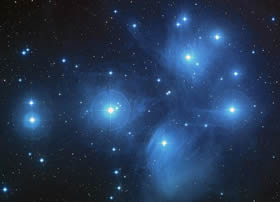What you can see
13.34 - Understand how a telescope alters the appearance of:a) stars
b) double stars
c) binary stars
d) open clusters
e) globular clusters
f) nebulae
g) galaxies
Look at the following comparing looking at the night sky naturally (Naked Eye) compared to with a telescope.
| Object | Naked Eye | Telescope |
|---|---|---|
| Stars | Appears as dots of light | Sharper dots of light |
| Binary stars | Appear as single star | Viewed as multiple stars |
| Double stars | Can just be seen as two stars in dark light | Viewed as multiple stars |
| Open clusters | Faint stars in close proximity. Some individuals can be seen. | Numerous individual stars can be seen |
| Globular clusters | Appear as vague ‘blur’ | Detailed numerous stars can be seen |
| Nebulae | Appears as small but slightly brighter ‘blur’ | Shape is more detailed. Colours are more obvious. |
| Galaxies | Difficult to view. Andromeda appears as a small dark grey smudge in blur conditions. | Brighter and detailed view |





.jpg)
 | © All Rights Reserved |
| © All Rights Reserved |